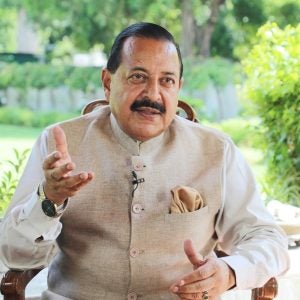 Unit 1 of Sweden’s Ringhals nuclear power plant was permanently shutdown on 31 December after 44 years of operation – a year after closure of Ringhals 2, according to plant operator, Ringhals AB, which is majority owned by Vattenfall (70.4%) and Sydkraft Nuclear Power (29.6%).
Unit 1 of Sweden’s Ringhals nuclear power plant was permanently shutdown on 31 December after 44 years of operation – a year after closure of Ringhals 2, according to plant operator, Ringhals AB, which is majority owned by Vattenfall (70.4%) and Sydkraft Nuclear Power (29.6%).
Ringhals 1 was built by Asea atom between 1969 and 1975. In 1976 it was put into operation and has delivered 220 terawatt hours of electricity to the Swedish electricity grid.
Ringhals 1, a 910MWe boiling water reactor (BWR) was built by Asea Atom between 1969 and 1975 and began operation in 1976. The other three units at the Ringhals NPP are Westinghouse pressurised water reactors (PWRs), including the now closed 960MWe Ringhals 2. Ringhals 3&4, both 1100MWe plants, are expected to operate until the beginning of the 2040s.
Ringhals 1&2 were originally expected to operate for 50 years, until 2025 and 2026 but Vattenfall's Board of Directors decided in 2015 their early closure in face of low electricity prices and the need for major investments to necessary refurbishment.
Ringhals NPP, before the closures accounted for 20% of Sweden's electricity production but will now generate only 12%. Before the closures, approximately 1600 people worked at the plant. Today they number 1179 and the target is set for between 850 – 900 people to remain in 2022/23.
Ringhals was the sixth reactor to close in Sweden. Barsebäck 1&2, both ASEA BWRs owned by Sydkraft, were closed in 1999 and 2005; and Oskarshamn 1&2 (also ASE BWRs) owned by OKG in 2016 and 2017. Sweden currently has three nuclear power plants with a total of six reactors in operation. Ringhals in Halland with two reactors, Forsmark in Uppland with three ASEA BWRs, and Oskarshamn in Småland with one BWR reactor.
Commenting on the Ringhals 1 closure, Björn Linde, CEO of Ringhals and Forsmark. “It is sad, but we are closing down with the flag flying at the top of the plant.” He added: “It is not a drama to close a nuclear power plant, we do it every year for maintenance shutdowns. But it is the journey here that has been special, to maintain both commitment, competence and a willingness to operate safely, stably and deliver power to the end. That is what makes me proud.”
Asked if closure was the right decision, he said: “I can think whatever I want, but it is the owners who decide and I know that on a number of occasions the decision has been re-evaluated and each time resulted in the same answer. There are no rational reasons to continue to run Ringhals 1.”
As to the future of nuclear power in Sweden, he noted: “I absolutely believe that there is a future for the existing nuclear power fleet in Sweden that can continue to operate very well for a very long time. Then I hope and believe that the new development of smaller reactors will be favourable for Sweden.”
Photo: Ringhals 1 (Credit: Vattenfall)






